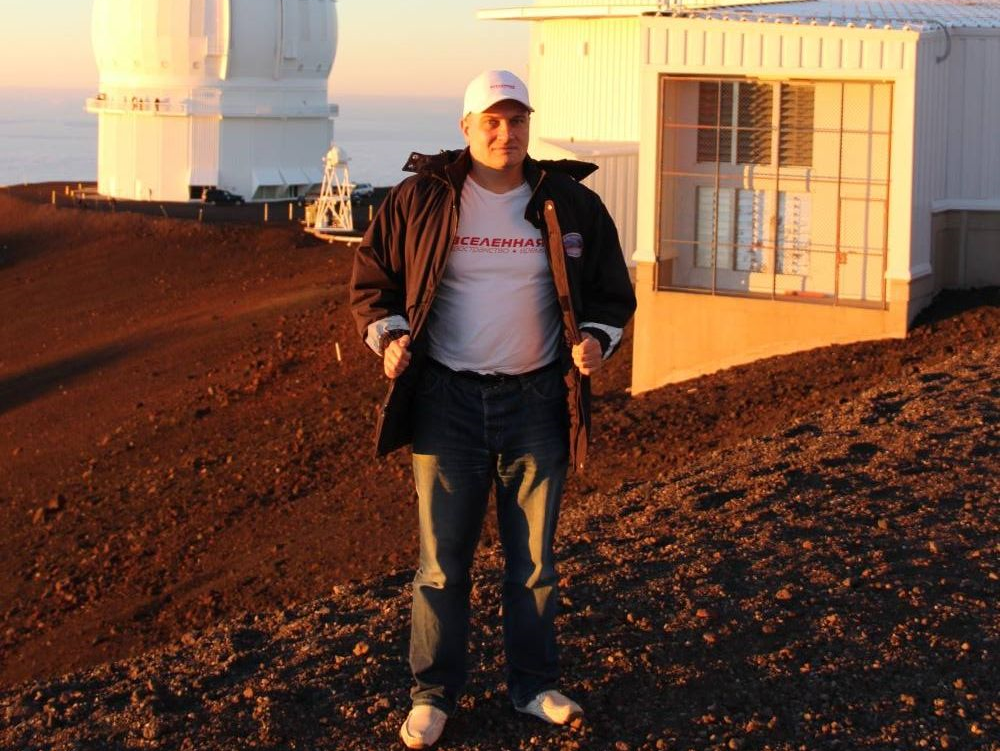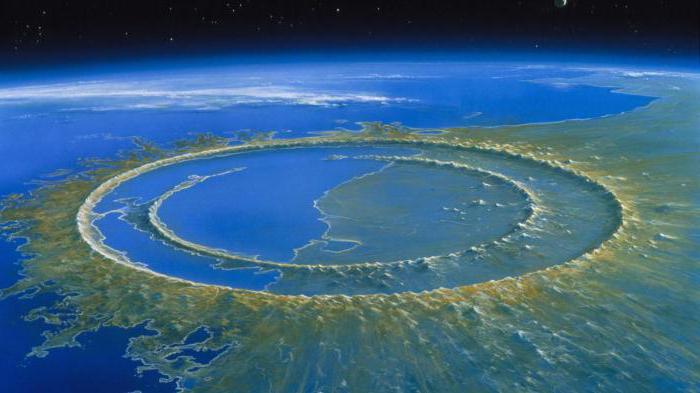I’m used to appreciating celebrated blockbusters well after the noise around them subsides — after reading reviews from knowledgeable people, and watching some analysis of “film bloopers”… About the same way I initially reacted to Adam McKay’s “Don’t Look Up.” But after a former classmate called me and said, “Be sure to look — this is about a comet”, I realized that I’m destined to not only to watch, but to write a review. Especially since 30 years of experience in communicating with professional astronomers and writing articles on astronomical topics qualifies me to do so, I hope.

At the beginning of the film, the Mauna Kea Observatory (Hawaii) and the Subaru Telescope, which is then repeatedly mentioned all across the plot, are shown quite accurately. But then something incomprehensible begins. During the observations, the observatory staff actively fusses around the instrument, brews tea and arranges meetings, when in fact the presence of staff at this time is allowed only in exceptional cases — it is no longer necessary to manually change photographic plates, open and close the shutter and adjust coordinates if the clockwork mechanism fails. Even the heat of the human, who happens to walk past the sensitive CCD array, which is now used to obtain images, can create undesirable disturbance. Not to mention that the nightі on Mauna Kea are quite cool all around the year, so observers prefer to be in a separate heated room, where you can also create an increased concentration of oxygen — some people not quite tolerate dilute air at an altitude of 4200 m. Here we can add that the Subaru reflector was built and operated by Japan, so I expected to see at least a couple of people of “Japanese appearance” among the staff — but let’s forget.

Comets have been discovered frequently while observing other celestial objects, although most are now discovered by automated telescopes and the SOHO Solar Observatory. Such an object was probably indicated in the lower right corner of the monitor: the galaxy M85. It is located in Coma Berenices constellation, and is best visible in February-March-April. And now guess what do astronomers do when they notice something resembling a comet in the sky? No, they do not rush to calculate its orbit, even if they already have three measured positions in a few days of observation — that’s how much you need to know to calculate the previous orbital elements by Gaussian least squares method mentioned in the film. The first thought that comes to the mind of a normal astronomer who has seen a comet-like object is: Has anyone noticed it before me? After all, the same galaxy is observed by hundreds of observatories and thousands of amateur astronomers all around the world! Maybe they also found a “foreign body” around?
You can check this on the website of the Minor Planet Center (MPC) — that very institution, which was advised not to contact by the “director of the department of coordination of planetary defense”. Although in fact this is a standard procedure for the astronomer who discovered the new body of the solar system. They find out who was the “first” person to discover the comet and give it his/her name (unless it is an automatic telescope). If there are two discoverers and the time gap between their observations is smallб ерут both are often added to the name. Even three of them had happened to be mentioned previously, but this practice has been discontinued since 1991.
The coordinates of the new object and the times of observations are sent to the Minor Planet Center, and a preliminary calculation of its orbit is performed. Let’s emphasize the word “preliminary”: the obtained orbital elements will be repeatedly updated as new observational data arrive, and only in about a month (sometimes more) it will be possible to say at what distance from the Earth the comet is going to pass.
We can easily forgive the authors of the film for the fact that young students present at the observations ask questions about things that, by definition, should be understood by a freshman at the Faculty of Astronomy. Suppose these questions were introduced into the script to make it easier for the viewer to understand what was happening. But when the main character asks: “Why does the ephemeris keep getting lower and lower?” — I have a question. The ephemeris is a large table that includes dates, the comet’s celestial coordinates at certain moments in time, its distances to the Sun and Earth, apparent brightness (the most difficult to predict, so it is usually indicated approximately), the angular distance between the comet and the Sun, and some other parameters. And do all of these “keep getting lower and lower”? Excuse me, did they have any scientific adviser?
Now let’s look at the ephemeris written with a marker on the board. The first line corresponds to the position of the comet at “zero moment” when it was discovered. Usually it is not taken as a starting point for ephemeris… but let it be. The comet’s distance from the Sun at this time is 4,663 astronomical units, slightly inside Jupiter’s orbit. Approximately in the same area of space many comets are being discovered today, so there is nothing unusual here. It is difficult to understand what the numbers in the third column mean. The second line probably shows the heliocentric distance on the hundredth day after the discovery, the third — on the 180th… and then funny: first is the date when the comet will approach the Sun by one astronomical unit (average radius of Earth’s orbit), and only then — the mentioned astronomical unit. The impression is that the date was known in advance, because it is not round and not whole. Okay, let’s forgive that too. This means that it is necessary to determine the moment when the object will be at the same distance from the Sun as the Earth. Although in the latter case this parameter changes quite strongly during the year (from 0.983 to 1.017 AU) and is more or less equal to 1.0 only in early April and October.
Or another question: can the “comet from the Oort cloud” get so close to our luminary in mere 193.6 days? Such bodies move along trajectories close to a parabola, and in general their dynamics do not differ much. Recall last year’s bright comet NEOWISE, which moved away from the Sun in an orbit with an eccentricity of 0.9992 (in the parabola, this figure is exactly 1.0). At a distance of 1 a.o. from the central luminary, it was on August 9, 2020, at a distance of 4,663 a.o. — May 1, 2021, ie in 264 days. Only man-made research probes or “interstellar travelers” like Oumuamua or Borisov’s comets can travel much faster through the solar system.
But the funniest thing is still ahead. Numbers written with a marker end with a third decimal place. This is one thousandth astronomical unit. Almost 150 thousand km — 12 times the diameter of our planet. Someone wants to convince me that, having such “accurate” calculations, it is possible to say that there is the 99.78% probability the comet will collide with Earth? Especially since earlier there was a phrase: “let’s round the angular distance of the perihelion to 85 degrees” (this is probably a parameter called “argument of perihelion”). So maybe it was worth rounding not in the bigger, but in the smaller direction?
I’m recollecting how the asteroid Apophis was discovered in 2004. At the end of the same year, after long calculations and refinements, experts in celestial mechanics announced that on April 13, 2029, it will collide with Earth with a probability of 2.7%. At that time, all newspapers and online media wrote about it, without even thinking of hiding anything. Then more accurate calculations were performed, and it turned out that on this day the asteroid will fly at a distance of at least 31,600 km from the Earth’s surface. This is very small distance (0.00021 AU), less than the height of geostationary satellites — but this is not a collision. In addition, that was a simple “heavenly stone”. Everything is a bit more complicated with a comet: its motion is affected by the so-called non-gravitational effects, when the reactive force of a jet of gas and dust escaping from the surface of the comet’s nucleus deflects it from the calculated trajectory. Even at intervals of about a month, these effects can seriously “derail” the comet. Science is not able to take them all into account, let alone predict them.
But suppose the collision happened. In general, its capacity is indicated correctly — “about a billion Hiroshima.” The Chicxulub meteorite, which fell to Earth 66 million years ago and killed dinosaurs, was also about 10 km in size and caused an explosion of similar power. But it was not accompanied by “numerous 10-11-magnitude earthquakes” and increased volcanic activity, as shown in the finale of the movie. The scenario was quite different: the masses of ocean water that evaporated on impact and the smoke from forest fires caused by falling of “secondary” debris for several years formed a dense clouding around the Earth, plants stopped receiving enough sunlight to grow, and the earth’s surface became very cold for reptiles not adapted to such conditions. Warm-blooded species — and humans belong to them, in the case someone has forgotten it — turned out to be more tenacious, so the global catastrophe gave them an evolutionary advantage. By the way, the extinction of dinosaurs was not instantaneous and lasted for several years. During such a period of time, even drastically reduced modern humanity could come up with something to continue its existence.
It is also an exaggeration to call a 5-10 km comet a “killer of planets”: much larger bodies have repeatedly fallen on Earth during its existence, but it has not disappeared as a planet.

I was especially surprised by the episode when the discoverer of the comet “suddenly” notices it in the sky. It is very difficult for me to imagine this: if I discovered a comet, I would watch it every day, try to see it every clear night in all available instruments, register all fluctuations in its brightness… and the moment when it will be visible to the naked eye definitely would not pose a great surprise for me, even if it were an “unplanned” flashing. Not to mention how many astronomy enthusiasts around the world are scrutinizing the sky for new comets and asteroids. Even if the appearance of the “Dibiaski comet” was kept secret, someone would still notice it as it gets closer to the Sun.
Well, huge amounts of “yttrium, terbium, osmium, dysprosium” in a comet that flew from the Oort cloud look absolutely incredible. All these metals, of course, are very valuable, but in high concentrations they can be found only in the asteroids of the Main Belt. We may suppose that such an assumption was made by the authors of the film in the sake of greater dramatization. And for the same reason they portrayed the cometary nucleus as some eerie shape (in fact, modern technology would not allow to photograph it from a great distance), and its appearance over the Earth before collision as a fireball with a plume of smoke (in reality it would look like a bright spot surrounded by a huge expanding nebula).
Other similar stretches are not related to comets and astronomy, but look crazy anyway, especially since many of them could be avoided, and many other — “smoothed” in the presence of a competent scientific adviser. It is no longer possible to launch any of the three surviving shuttles into space: they are as disassembled as possible, and some of the necessary components are not produced at all — for example, a large external fuel tank. It is difficult to understand the meaning of a “parallel” launch with a bunch of small rockets: first, no spaceport has so many launchers for them in a small area, and secondly, it’s just dangerous. There is a high probability that one or two will fail and explode or go on an uncharted trajectory, creating problems for others. Later, during the launch of the “drones”, this was clearly demonstrated. Finally, shuttles do not fly with one pilot and cannot be picked up and returned during launch. Like an airplane that has just taken off from an airfield, a reusable spacecraft must spend or drain most of its fuel from its own tanks before landing, and it is desirable for it to go into Earth orbit and make a revolution or two.
Another hilarious statement — “Drones have gained escape velocity” and this is supposed to allow them to fly to the comet. But no, it will not allow: the term “escape velocity” means that the speed of the body relative to the Earth when leaving the sphere of gravity of the latter will be zero. To fly somewhere further, you need to accelerate more. And then you have to slow down even harder to make a soft landing on the comet’s nucleus — otherwise, when approaching head-on, you can only crash into it. However, all this intricate technology of “utilization” of the comet turned out to be a mess.
It seems strange that Russia, India and China are named among the independent organizers of the “rescue mission”, but there is no mention, for example, of the European Union, which has no less capacity for this. The surroundings of the Baikonur Cosmodrome look similar to the prairies of the American Midwest, but not to the Kazakh steppes. Finally, the final scenes involving Professor Mindy and Dr. Dibiaski take place in the snowy state of Michigan. However, this is completely inconsistent with the dates of possible collisions with the comet, which we determined earlier: neither in early April nor in early October, such a frosty weather has not been observed there for a long time.
Of course, we can say that all these distortions and inaccuracies are justified by meaningful ending, which clearly shows: no matter how beautiful an alien planet may seem it is still alien, and therefore will be more hostile and less livable than native Earth. Therefore, our planet must be protected, and we should not comfort ourselves with the thought that we will be able to escape from it if we have status or big money. This opinion is quite relevant and correct, but even for the sake of it, it still not worth injecting so much outright nonsense into the film. It greatly spoil the overall impression, and most importantly — gives a misconception about how astronomical discoveries are made, how the scientific community works and what means humanity has to prevent a global threat. The authors of the film created a kind of curved mirror to exaggerate and grotesquely reflect the problems and vices of modern society, but the reflection of science in it is as distorted. And it’s a pity… science really worth honest popularization.
Follow us on Twitter to get the most interesting space news in time:
https://twitter.com/ust_magazine
